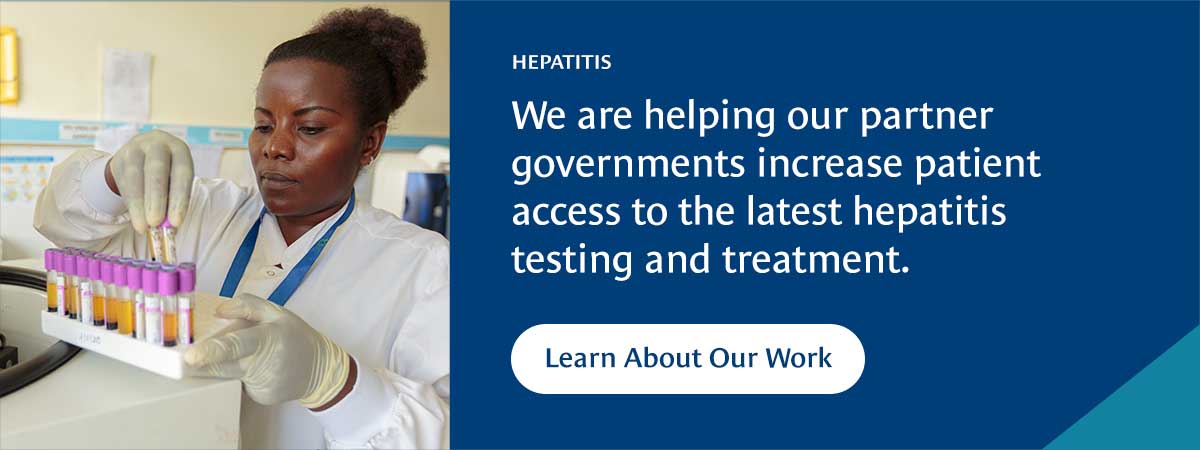Since 2015, CHAI has supported countries including Cambodia, Indonesia, India, Myanmar, Nigeria, Rwanda, and Vietnam to build public sector hepatitis C screening and treatment programs. Effective direct-acting antiviral drugs are now available to cure hepatitis C in a well-tolerated oral 12-week regimen, with cure rates of more than 90 percent. A summary of this work and aggregate program data was published in BMJ Global Health in 2020. However, to date, there has been limited visibility into the individual patient-level data from these programs.
This week, an article was published in BMJ Open—a collaboration between CHAI and the governments of Indonesia, India, Myanmar, Nigeria, and Vietnam, highlighting analyses from initial patient-level program monitoring and evaluation (M&E) data in these countries. The analysis described the characteristics of the patients being treated through public sector hepatitis C programs and analyzed treatment outcomes across different groups of patients. Analyses were first shared and discussed with each country government and used to tailor and strengthen each program. Now, for the first time, these analyses are being shared with the global community.
In this large analysis of data from over 100 000 patients treated for hepatitis C across the five countries, 90.6 percent of patients completed treatment and of those who completed follow-up testing, 92.6 percent were confirmed cured. However, there were gaps in follow-up testing (called sustained virologic response testing at 12 weeks, or SVR12) in some country contexts. In addition, in some countries, groups of patients including males, younger people and cirrhotic patients on longer regimens were significantly less likely to complete treatment or be cured. These groups may require additional programmatic support to complete their treatment and achieve cure.
The findings shared through this manuscript highlight the achievements to date with modest investments in hepatitis C programs and identify areas for program strengthening that may benefit other programs globally. You can read and download the full article here.
This work was generously supported by the UK Foreign, Commonwealth, and Development Office.






